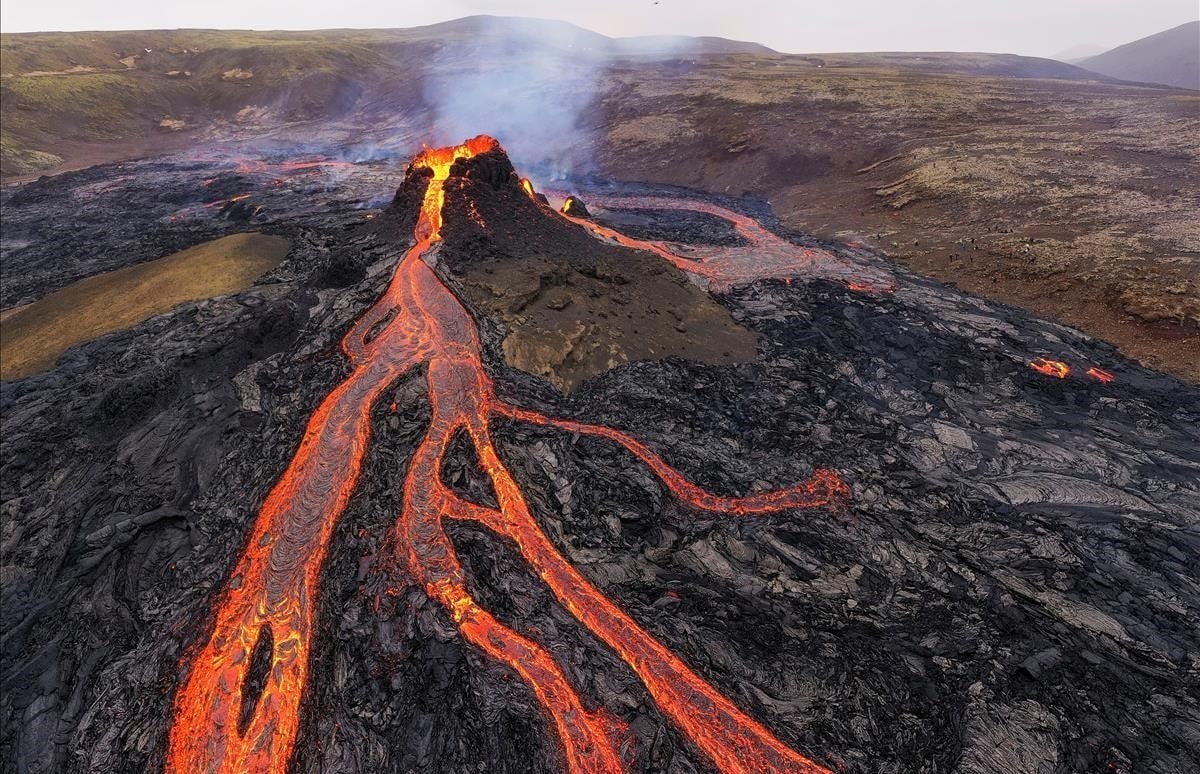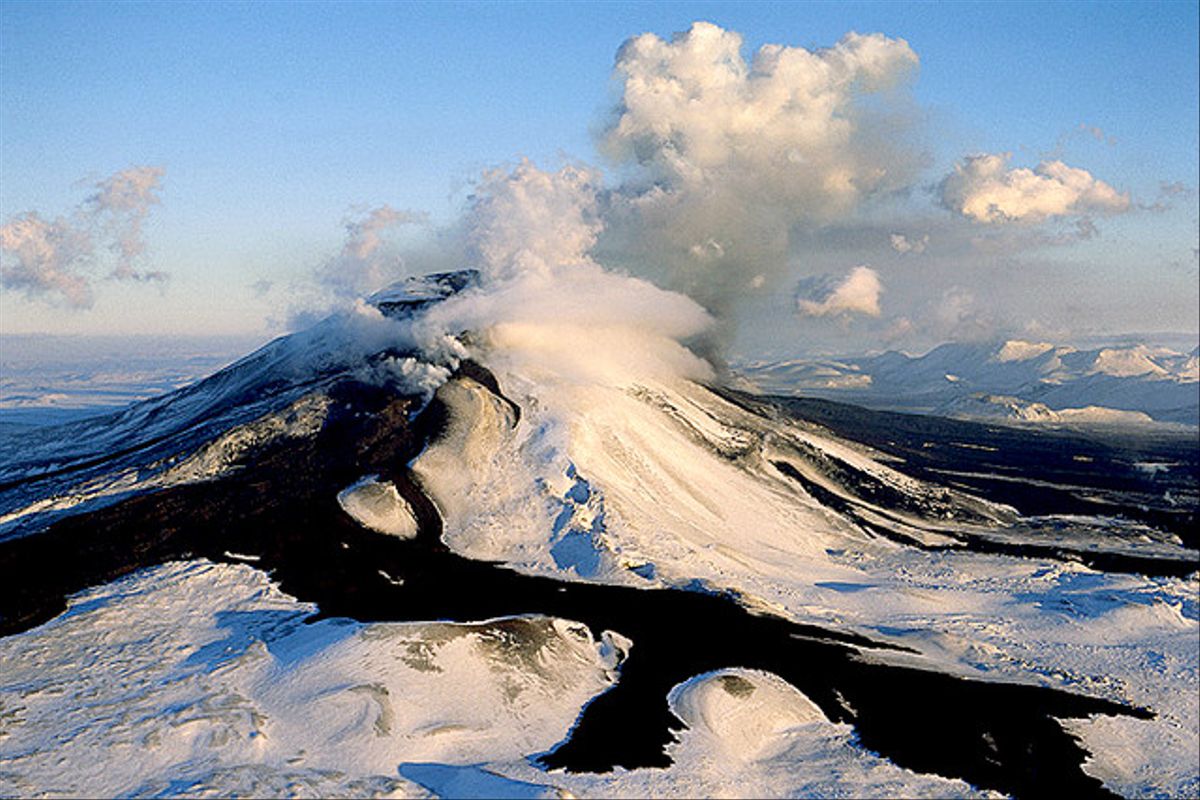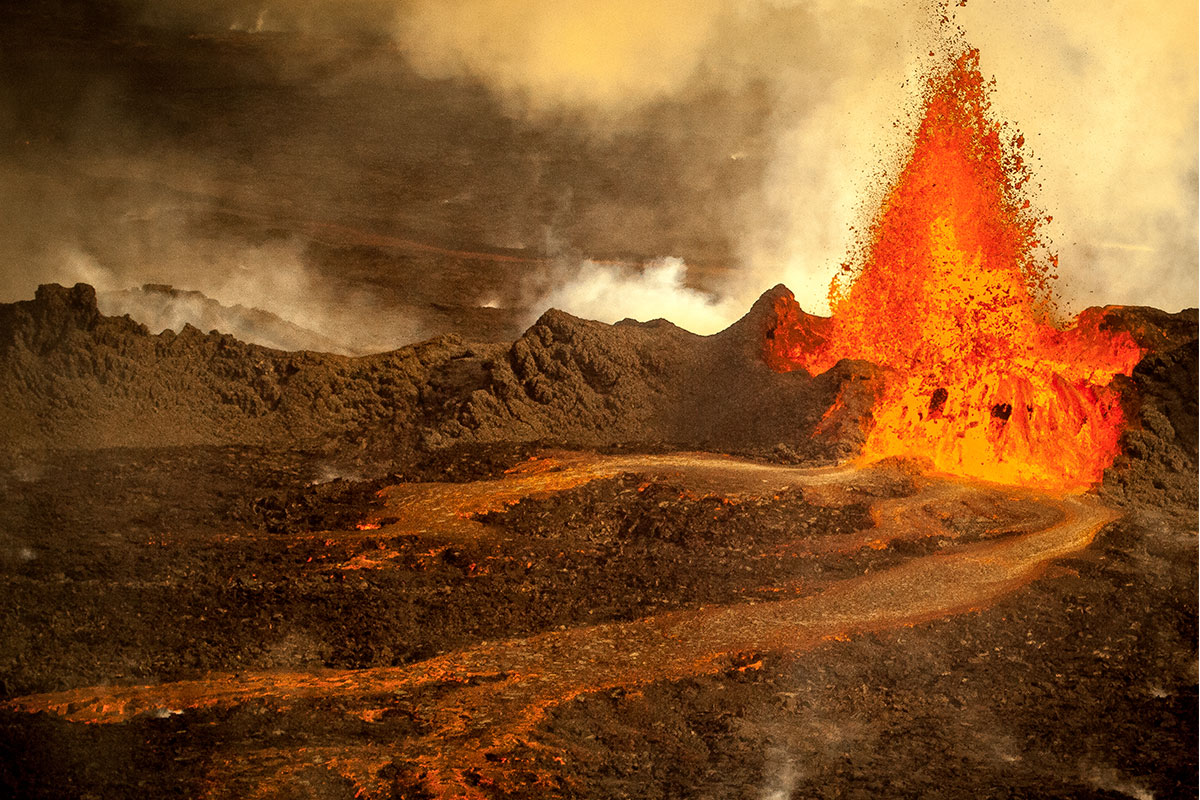
Iceland, the land of ice and fire, is a natural paradise. The cold power of glaciers and the arctic climate are in conflict with the explosive heat of the earth. The result is a world of spectacular contrasts in the incomparable beauty of the stark landscape. Without Icelandic volcanoes, all of this is impossible. The power of volcanoes in iceland It can define the nature of this land better than any other volcano, creating endless moss-covered lava fields, vast plains of black sand, and rugged mountain peaks and massive craters.
Therefore, we are going to dedicate this article to tell you everything you need to know about volcanoes in Iceland and their characteristics and importance.
Volcanoes in Iceland

The volcanic forces below the surface have also created some of the country's most popular wonders, such as natural hot springs and exploding geysers. Additionally, the effects of past eruptions can be seen in the cliffs formed by sinuous lava caves and hexagonal basalt pillars.
Thousands of people flocked to Iceland to see its volcanoes and the miracles they created and continue to create. During a volcano eruption, we should be more eager for a chance to see one of the most spectacular and wonderful phenomena on earth. Considering that it is important to the nature of Iceland and the nature of the industry and even the nature of the country, we have compiled this authoritative guide to the volcanoes of Iceland, and we hope it can answer all the questions you might ask yourself about the power of these volcanoes.
How many there are?

In Iceland, there are around 130 active volcanoes and dormant volcanoes. There are about 30 active volcano systems under the island, except in the West Fjords, throughout the country.
The reason the West Fjords no longer have volcanic activity is that it is the oldest part of the Icelandic mainland, It was formed about 16 million years ago and has since disappeared from the Mid-Atlantic Range. Therefore, the West Fjords is the only area of the country that requires electricity to heat water instead of geothermal water.
The volcanic activity in Iceland is due to the country's location directly on the mid-Atlantic ridge that separates the North American and Eurasian tectonic plates. Iceland is one of the few places in the world where this ridge can be seen above sea level. These tectonic plates are divergent, which means that they are separated from each other. In doing so, the magma in the mantle will appear to fill the space that is being created and appear in the form of a volcanic eruption. This phenomenon occurs along the mountains and can be observed on other volcanic islands, such as the Azores or Santa Elena.
The Mid-Atlantic Range runs through all of Iceland, in fact most of the island is on the American continent. There are many places in this country where partial ridges can be seen, including the Reykjanes Peninsula and the Mývatn region, but the best is Thingvellir. There, you can walk through the valleys between the plates and clearly see the walls of the two continents on either side of the national park. Due to the divergence between the plates, this valley expands about 2,5 cm each year.
Frequency of eruptions

Volcanic eruptions in Iceland are unpredictable, but they do occur relatively regularly. There hasn't been a decade since the early XNUMXs without explosions, although the probability that they occur rapidly or more widely is quite random.
The last known eruption in Iceland occurred at Holuhraun in the Highlands in 2014. Grímsfjall also recorded a brief eruption in 2011, while the more famous Eyjafjallajökull volcano caused serious problems in 2010. The reason the term 'known' is used It is due to the suspicion that there have been multiple subglacial volcanic eruptions in different parts of the country that have not broken the ice sheet, including Katla in 2017 and Hamelin in 2011.
Today, the threat to human life during the volcanic eruption in Iceland is very small. The seismic stations scattered across the country are very good at predicting them. If major volcanoes like Katla or Askja show signs of rumbling, access to the area will be restricted and the area will be closely monitored.
Thanks to the good conscience of the first settlers, the most active volcano is far from the inhabited nucleus. For example, there are few cities on the southern coast of Iceland, because volcanoes like Katla and Eyjafjallajökull are located in the north. Because these peaks are located below the glacier, its eruption will cause huge glacial floods, which can sweep away everything on the way to the ocean.
This is what makes most of the South look like a black sand desert. In fact, it is a plain made up of glacial deposits.
Danger of volcanoes in Iceland
Due to their unpredictability, these glacial floods, known as jökulhlaups, or Spanish in Icelandic, remain one of the most dangerous aspects of Icelandic volcanic activity. As mentioned above, eruptions under the ice are not always detected, so these flash floods can occur without warning.
Of course, science is constantly advancing, and now, As long as there is even the slightest doubt that hail may occur, you can evacuate and monitor an area. Therefore, for obvious reasons, it is forbidden to drive on prohibited roads, even in summer or when it seems that there is no danger.
Although most volcanoes are far from densely populated centers, accidents always happen. In such cases, however, Iceland's emergency measures have proven tremendously effective, as was seen in the 1973 eruption at Heimaey in the Vestman Islands.
Hemai is the only inhabited island in the Vestman Islands, a volcanic archipelago. When the volcano erupted, 5.200 people lived there. In the early hours of January 22, a fissure began to open on the outskirts of the city and snaked through the city center, destroying roads and engulfing hundreds of lava buildings.
Although it happened late at night and in the dead of winter, the evacuation of the island was carried out quickly and efficiently. Once the residents landed safely, rescue teams worked with US troops stationed in the country to minimize the damage.
By constantly pumping seawater into the lava flow, they not only managed to redirect it away from many houses, but also prevented it from clogging the harbor, ending the island's economy forever.
I hope that with this information you can learn more about the volcanoes in Iceland and their characteristics.